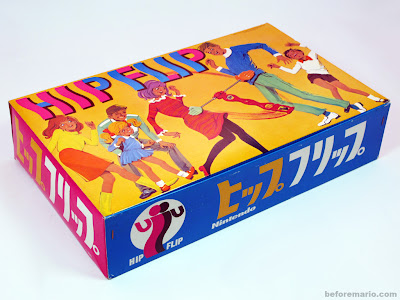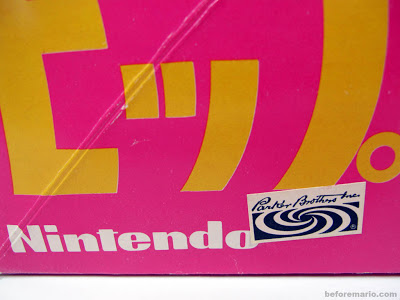It also had an impact on the toy scene, in particular on party games. All of the big American toy companies created games that catered to this new demand for swinging, groovy fun.
The first of these kind-of risqué games is MB's Twister, from 1966. It is also the most successful in this genre, up to this day.
 |
| Twister - The Game That Ties You Up In Knots |
At the time, many people likely will have considered Twister as inappropriate or even lewd. The official goal of the game is to try and not touch each other too much. Still, obviously, the real fun is had when this objective fails and you cannot help but collapse into a human pile.
After MB's huge success with Twister, fellow toy giant Mattel followed with the downright scandalous Tight Squeeze. Touching each other is no longer a side effect here. This game is centered around strapping a bunch of people tightly together in pairs, in a big belt-like contraption, and seeing who can squeeze out first. In cases where the game partner was to your liking, I am sure people were in no hurry to finish the game, maximizing the wiggle time.
Tight Squeeze was advertised as "The Snuggle-Struggle Home Party Game for All Ages".
Not to be outdone, Parker Brothers also created a party exercise toy: the Hip Flip.
 |
| Parker Brother's Hip Flip |
Like Twister a couple of years before it, the Hip Flip was brought to Japan by Nintendo.
 |
| Nintendo's version of the Hip Flip (1968), licensed from Parker Brothers |
Hip Flip is a game to be played by a couple.
This couple presses the Hip Flip between each other and then move their bodies to make the bell spin around, without the use of their hands. Flipping their hips, so to speak.
Hip Flip (ヒップフリップ) was released by Nintendo in Japan in 1968, and retailed for ¥980.
The game is a straight copy from the original by Parker Brothers, but the box was completely redesigned for the Japanese market, including this Hip Flip logo that depicts the - shall we say - tactile nature of the game.
Nintendo acquired an official license for Hip Flip from Parker Brothers, and manufactured the game themselves in Japan.
The Hip Flip set consists a two-part metal tube, two plastic hands and a three-part swinging bell piece. The plastic parts are bright red, orange and green.
The two hands are attached on either side of the metal tube.
The bell is placed in the middle, completing the Hip Flip.
Nintendo included a "NG" (Nintendo Game) logo on the top of the bell frame.
The Hip Flip is decorated with a a number of heart shapes, further hinting that playing with this toy could be a first step towards some more serious hanky panky.
The hands at the end of the tube are curved to allow the Hip Flip to cling tightly on the couples' bodies.
For small couples, the bell frame can be shortened.
Ok. All set. Hands clear. Go!
Start that grinding motion to swing the bell from left to right and back.
When you get the swing of it, the bell should start to spin around. Keeping it spinning is no easy feat.
Of course, other positions are possible as well.
Like sideways, as shown here.
Or back-to-back.
Walking through the room, while Hip Flip-ing. Why not? You are really only limited by your own imagination.
But wait a minute. Is that guy on the right touching his best friend's behind?
It may have been the swinging sixties, but that is where I personally would have drawn the line.























@ last picture: Why not? It seems that Nintendo was already that modern in the sixties. Don't forget they introduced with birdo from super mario bros. 2 a transsexual chracter already in the early times of their videogame history.
ReplyDeleteDon't expect _this_ to show up in the next Mario Party game!
ReplyDeleteDid you know that this toy had also a TV commercial?
ReplyDeleteYes, Nintendo used a lot of tv commercials in the 1960s and 1970s.
Delete